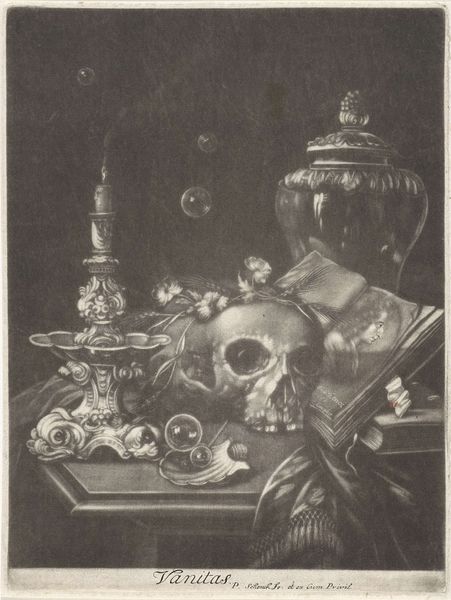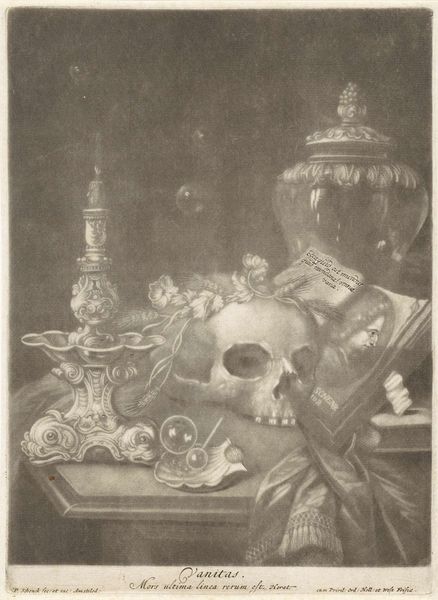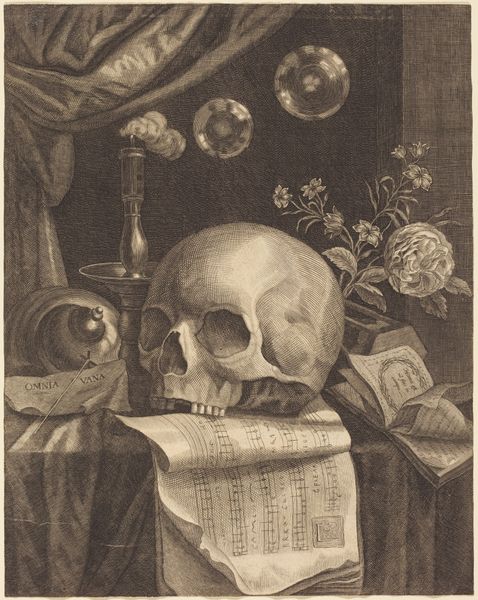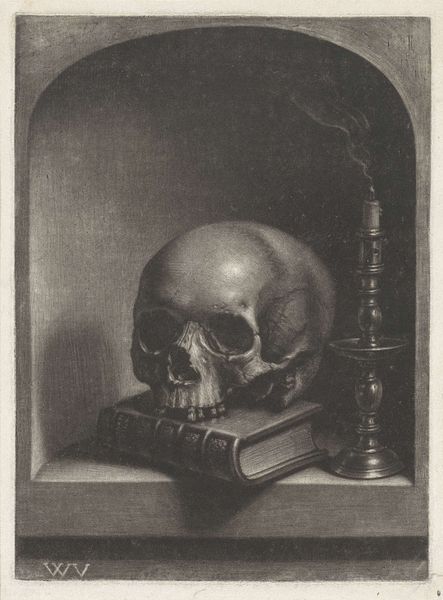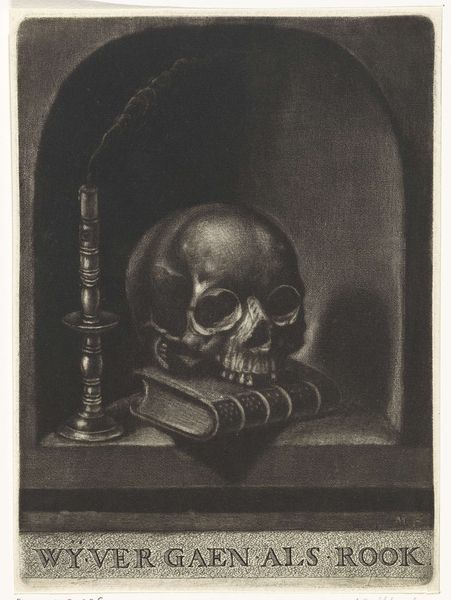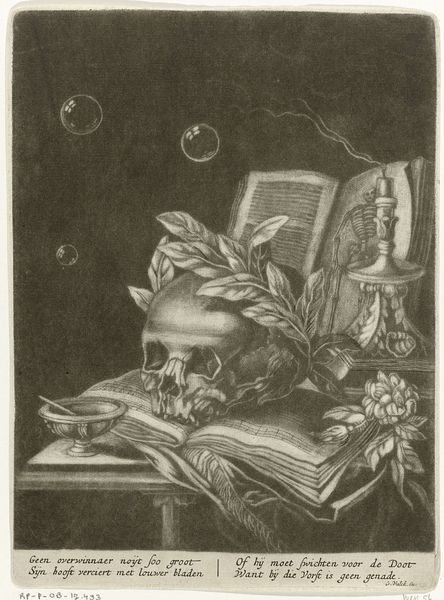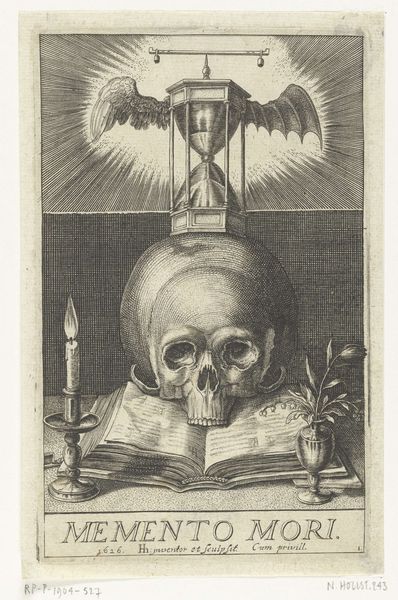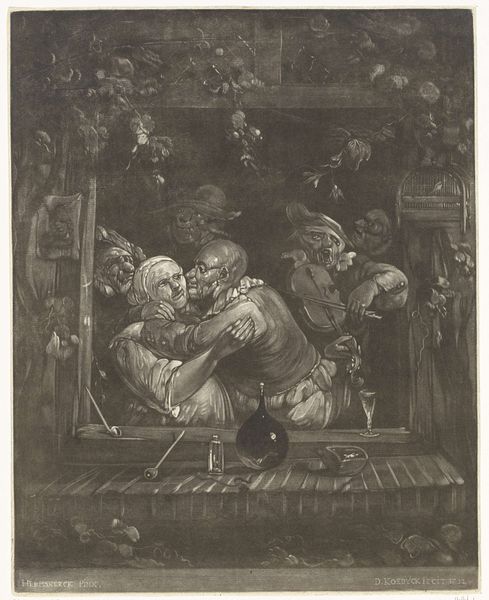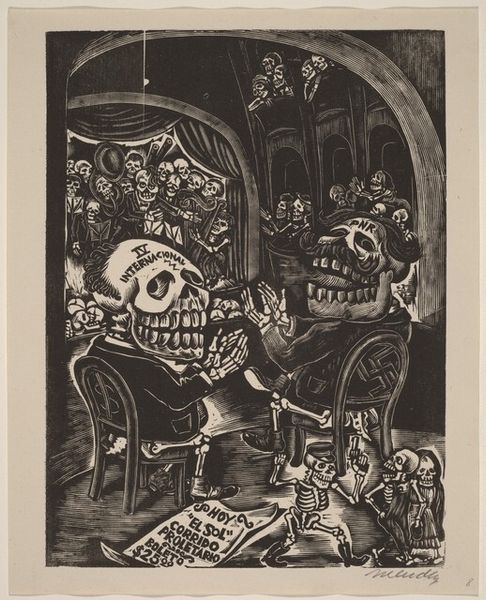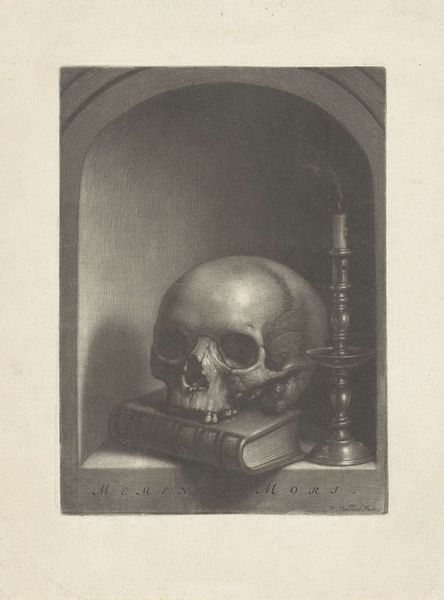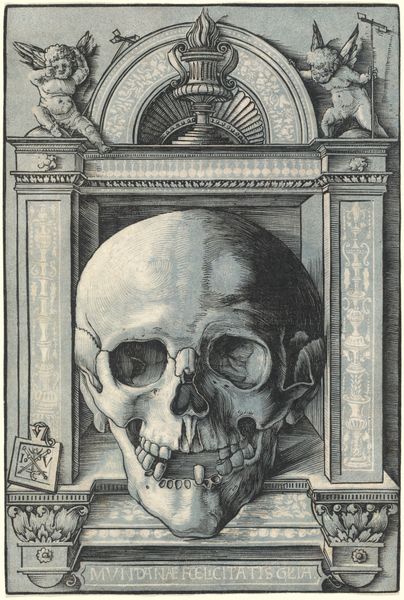
print, engraving
#
baroque
# print
#
old engraving style
#
caricature
#
vanitas
#
momento-mori
#
surrealism
#
engraving
Dimensions: height 243 mm, width 178 mm
Copyright: Rijks Museum: Open Domain
Curator: This is Pieter Schenk's "Vanitasstilleven met een bloembekranste schedel," a baroque engraving created sometime between 1670 and 1713. Editor: Somber! The heavy chiaroscuro emphasizes the objects—a skull crowned with flowers, a snuffed candle, fragile bubbles—all pointing towards ephemerality. It certainly delivers its intended memento mori. Curator: Indeed. This work embodies the Dutch vanitas tradition. We can interpret it through the lens of post-Reformation anxieties about earthly pleasures and the certainty of death. The skull, obviously, is central. But consider the accoutrements: the wilting flowers symbolize the fleeting nature of beauty, while the books and the portrait remind us that even knowledge and fame are temporary. Editor: I notice the exquisite detail, especially the texture of the skull itself. Schenk really exploits the tonal range possible with engraving. There's a diagonal sweep across the composition too, from the upper-right, heavy urn to the almost-playful soap bubbles at the left, guiding our eye in a very deliberate fashion. Curator: And look closer still: the text at the bottom spells it out. "Vanitas. Mors ultima linea rerum est" -- Death is the final end. It suggests an explicit class commentary, that these items—intellectual, domestic, beautiful—represent class, and therefore class constructs will pass with death. Editor: And even beyond that immediate socio-political reading, there's the symbolic use of the light, here extinguished. The contrast draws attention to absence, underscoring that core idea of vanity and futility in temporal existence. Curator: Vanitas paintings like this served as moral lessons, stark reminders against hubris. They encourage a critical self-reflection, urging us to re-evaluate what we deem important in our lives. Editor: Considering its enduring impact, and this image still affects us now. Perhaps the visual devices within it reach across temporal moments by being starkly composed and carefully lit. Curator: Its message still resonates powerfully today. A timeless interrogation of power structures, societal excess, and personal morality—relevant as ever. Editor: A well-composed moment of dark reflection, reminding us of that persistent and profound truth.
Comments
No comments
Be the first to comment and join the conversation on the ultimate creative platform.
